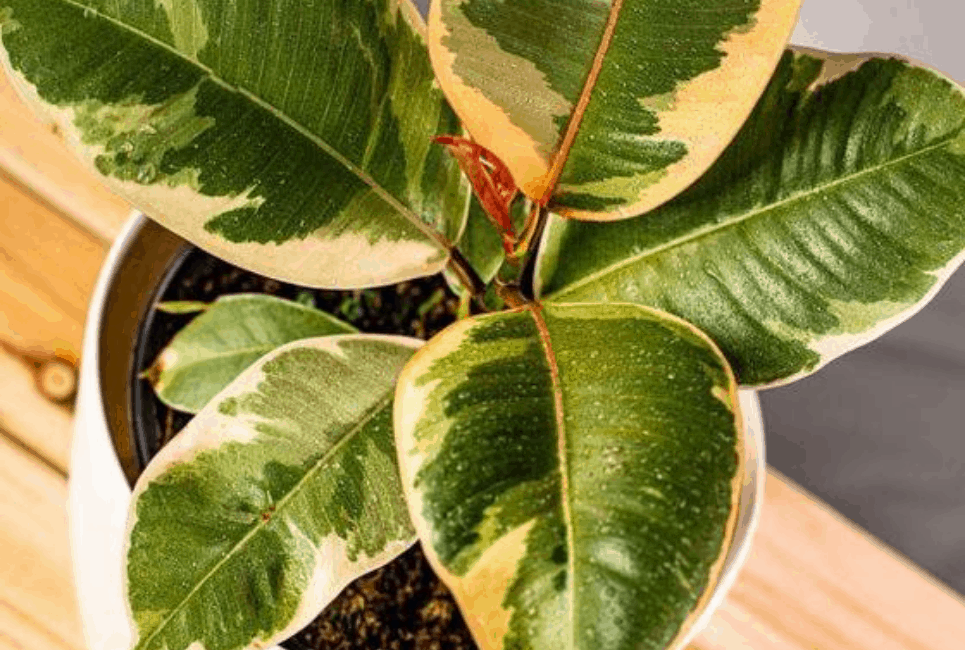- How to Propagate Monstera Guide: The Three Ways to Succeed - September 17, 2021
- Escargot Begonia: Why Is The Rex Begonia So Rare? - August 31, 2021
- Rieger Begonia: When You Can Expect The Hiemalis Begonia To Flourish - August 31, 2021
This popular houseplant is a native of India and Indonesia. It is considered a new variety of variegated rubber plants but it is just as easy to grow and care for as other varieties. Let’s learn a little more about Ficus Tineke and its many wonderful qualities.
How to Identify Ficus Tineke
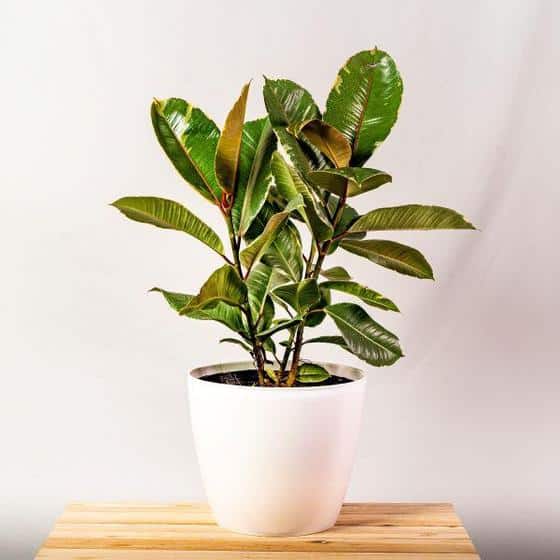
The key identifiers of this plant are:
- Its large, glossy, and rubber-like leaves
- The variegation of its leaves (usually pink, green, and yellow colors)
How to Grow Ficus Tineke from Seed
Propagating this plant from seed will take some time and patience, but it can be done and it is worth the effort. The steps for doing this are:
- Purchase seeds from a reputable seller (sellers who price their seeds between $1 and $2)
- Put the seeds in a glass of water to determine which seeds are fertile and which are not (fertile seeds will sink; sterile seeds will float)
- Fill a container with a seed starting soil mix
- Place the seeds on top of the soil mix; there is no need to cover them
- Water the soil so that it is moist but not soggy
- Set the container in a warm spot that gets plenty of bright, indirect sunlight
- Maintain the heat and moisture levels as the seeds germinate and grow
- When the second set of leaves appear on the plants, they can be transplanted to permanent plant containers
How to Propagate Ficus Tineke
This plant is easy to propagate via stem cuttings. The steps for doing this are:
- Put on a pair of gloves (the sap of this plant can irritate the skin)
- Use a sterile cutting utensil to cut off a foot-long branch that includes nodes and leaves
- Remove leaves that are near the bottom of the branch
- Use a rooting hormone on the bottom of the branch
- Set the cutting into a container that has been filled with potting soil
- Water the soil
- Set a plastic bag over the plant to keep in humidity
- Set the plant container in a warm area that has access to bright, but indirect sunlight
- If necessary, repot the plant in a larger container once it is well established
Ficus Tineke Growing Conditions
This plant needs stable temperatures, moisture levels, and sunlight to grow properly. Since it is native to tropical regions, it requires temperatures that remain above 55 degrees Fahrenheit and plenty of humidity. To provide this without struggling to keep people and animals in a comfortable living space, consider using a plant humidifier or pebble tray and a heat mat.
How to Plant Ficus Tineke
It is not necessary to repot this type of plant very often. Repotting a Ficus Tineke can cause it shock and it could lose leaves, so it should only be done when absolutely necessary and only in the early springtime. The benefit of repotting a plant from time to time is that it will provide them with new, fresh soil and room to grow. The steps for repotting a Ficus Tineke plant are:
- Fill a plant container with potting soil
- Create a hole in the soil for the plant to set inside
- Carefully remove the plant from its current container
- Gently dust off any excess soil from its roots
- Set the plant into the hole in the new container
- Spread the soil around so that the plant is secure in its new container
- Water the plant
- Set it in a warm spot with indirect sunlight
Ficus Tineke Potting & Soil
This plant requires soil that is well-draining but can retain some moisture. Its soil can contain some clay, sand, or loam.
Ficus Tineke Water Requirements
This plant should not be watered unless the top two inches of its soil is dry. It will need more water during warm months than it will during cold seasons. Always ensure that excess water is able to drain out from drainage holes since this plant can suffer from overwatering.
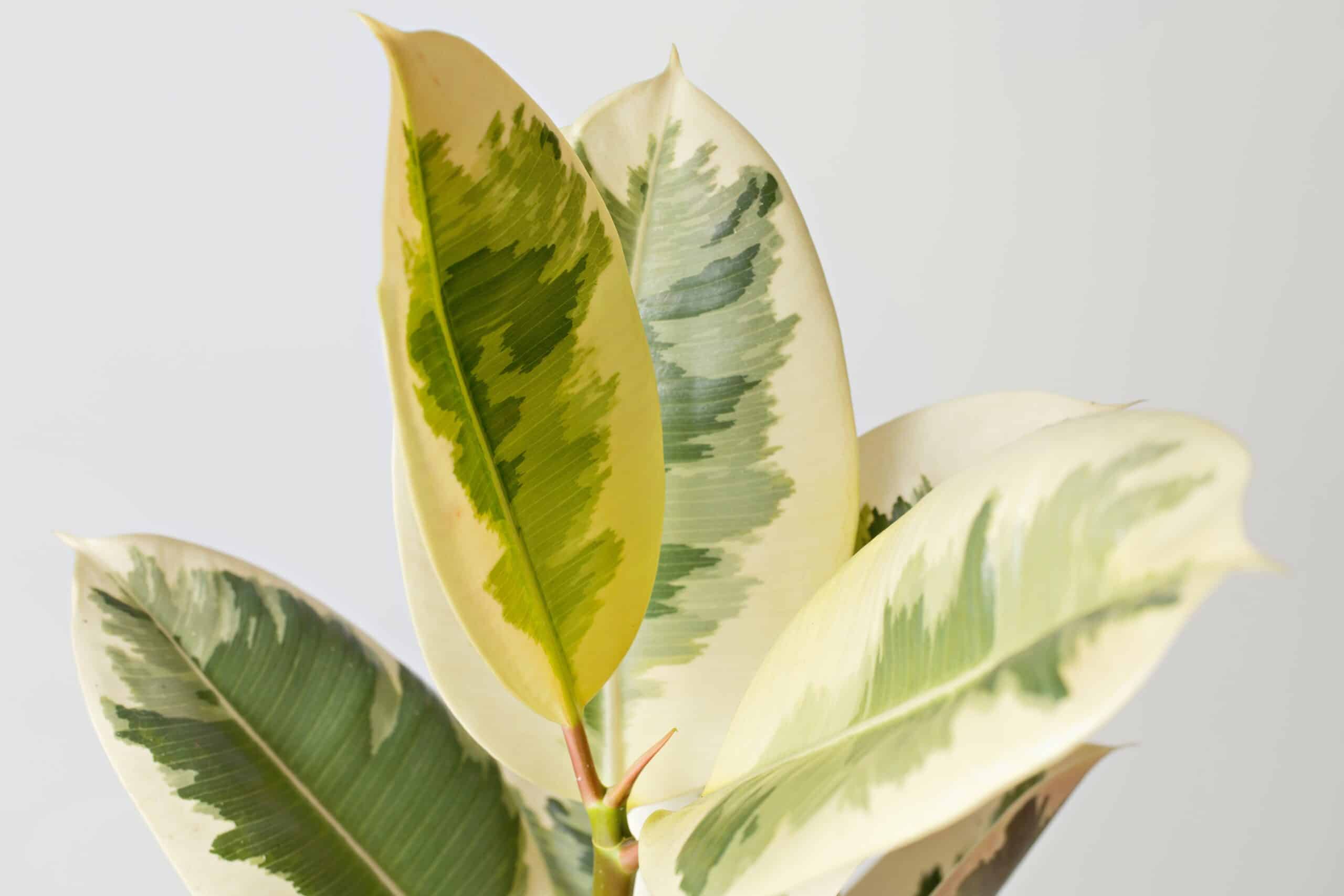
Best Ficus Tineke Fertilizer
This plant should only be fed during warm months. It can be fed once a month with a half dose of liquid fertilizer.
Best Ficus Tineke Companion Plantings
Tropical plants look their best when they are surrounded by other tropical plants. Together they create a beautiful and relaxing tropical environment all while providing each other with extra humidity. Try clustering a Ficus Tineke with one or all of these wonderful companion planting options:
Baby Rubber Plant
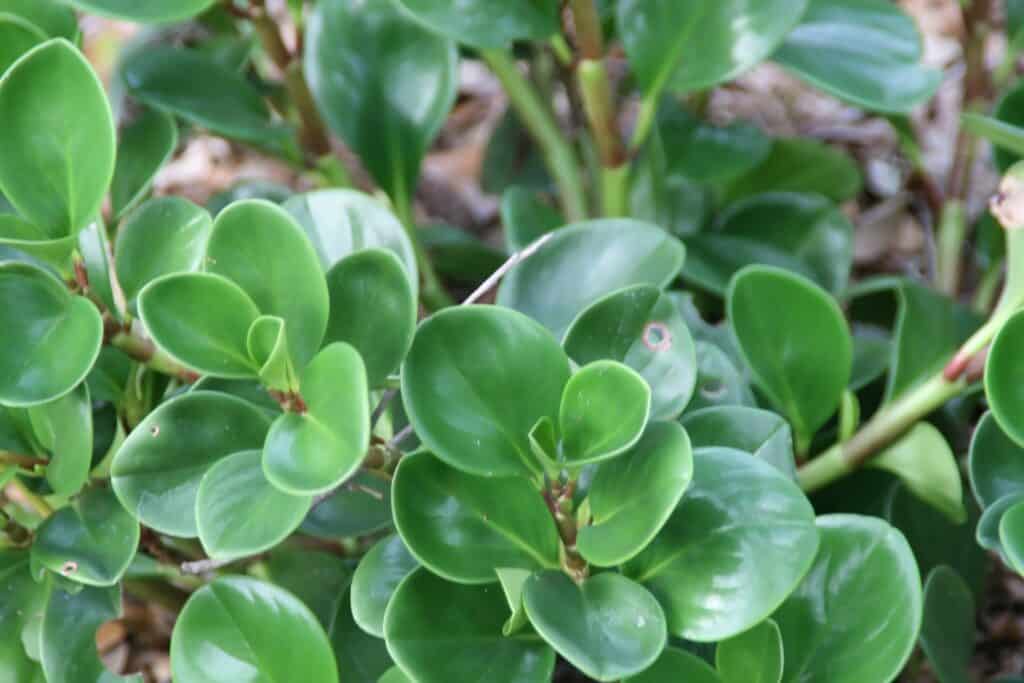
This is an adorable plant that stays tiny. It is versatile, hardy, and easy to care for. Its similar features and care requirements make it an excellent choice to use as a companion planting for Ficus Tineke.
Light Requirements
Baby Rubber Plant can adapt to low light, but ultimately, it grows better and looks better when placed in a spot that gets plenty of bright, indirect sunlight.
Soil Requirements
Baby Rubber Plant requires soil that is well-draining and well aerated. It is best to use a soil mix that contains two parts peat and one part perlite or sand.
Water Requirements
Baby Rubber Plant should only be watered when the top two inches of its soil is dry. It should be watered in the soak and dry method.
Pros
- It has a lot of common care requirements with Ficus Tineke
- It is easy to care for
- It is a unique-looking plant
- It is not toxic
- It can be planted in water for short periods of time
Cons
- It is susceptible to root rot
- It is susceptible to infestations of mealybugs and spider mites
Fiddle Leaf Fig

This is a tall ornamental plant that is native to the tropical regions of West Africa. It is more challenging to grow indoors than other tropical plants, but its stunning looks make it worth the effort. Fiddle Leaf Fig will definitely look great next to a Ficus Tineke.
Light Requirements
Fiddle Leaf Fig should be set in an area that receives plenty of bright but indirect sunlight. It should be rotated several times a year so that every side of the plant has access to sunlight.
Soil Requirements
Fiddle Leaf Fig requires soil that is well-draining.
Water Requirements
Fiddle Leaf Fig should only be watered when half of its soil has dried from the previous watering session. Excess water should be allowed to drain from drainage holes and its root system should not be allowed to sit in standing water or soggy soil.
Pros
- It is a beautiful plant that grows large
- It has air purifying qualities
Cons
- It has some finicky care requirements
- It is susceptible to root rot
- It is susceptible to shock if repotted too often
- It is mildly toxic
- It requires humidity in its environment
- It is susceptible to over-fertilization
Mini Money Tree
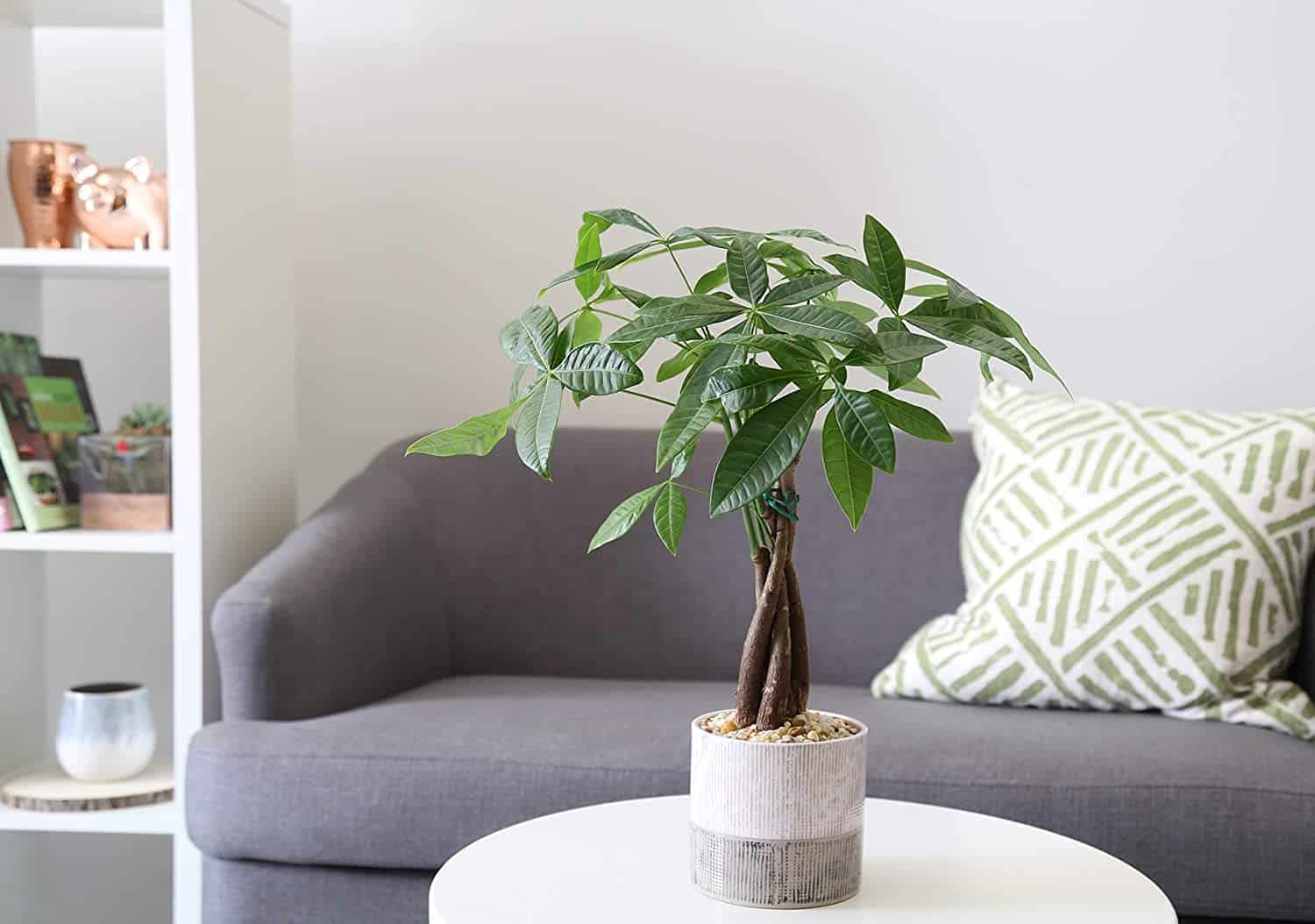
This plant is native to South and Central America but is very popular in East Asia where it is considered good luck to own one.
Light Requirements
Mini Money Tree should be set in an area that receives plenty of bright but indirect sunlight. It should be rotated several times a year so that every side of the plant has access to sunlight. It is also able to adapt to low light or grow lights.
Soil Requirements
Mini Money Tree requires soil that is well-draining.
Water Requirements
Mini Money Tree should only be watered when half its soil has dried from the previous watering session. It is best to drench the soil so that excess water flows through the drainage holes of the plant container.
Pros
- It is a relatively easygoing and hassle-free plant
- It is not toxic
Cons
- It requires humidity in its environment
- It is susceptible to root rot from overwatering
- It is not cold tolerant
Ficus Tineke Diseases and Common Problems
This plant is susceptible to a few types of infestations and diseases. The most common problems it faces are:
- Aphids
- Mealybugs
- Leaves with Brown Spots
- Scale Insects
- Spider Mites
Ficus Tineke Treatments and Maintenance
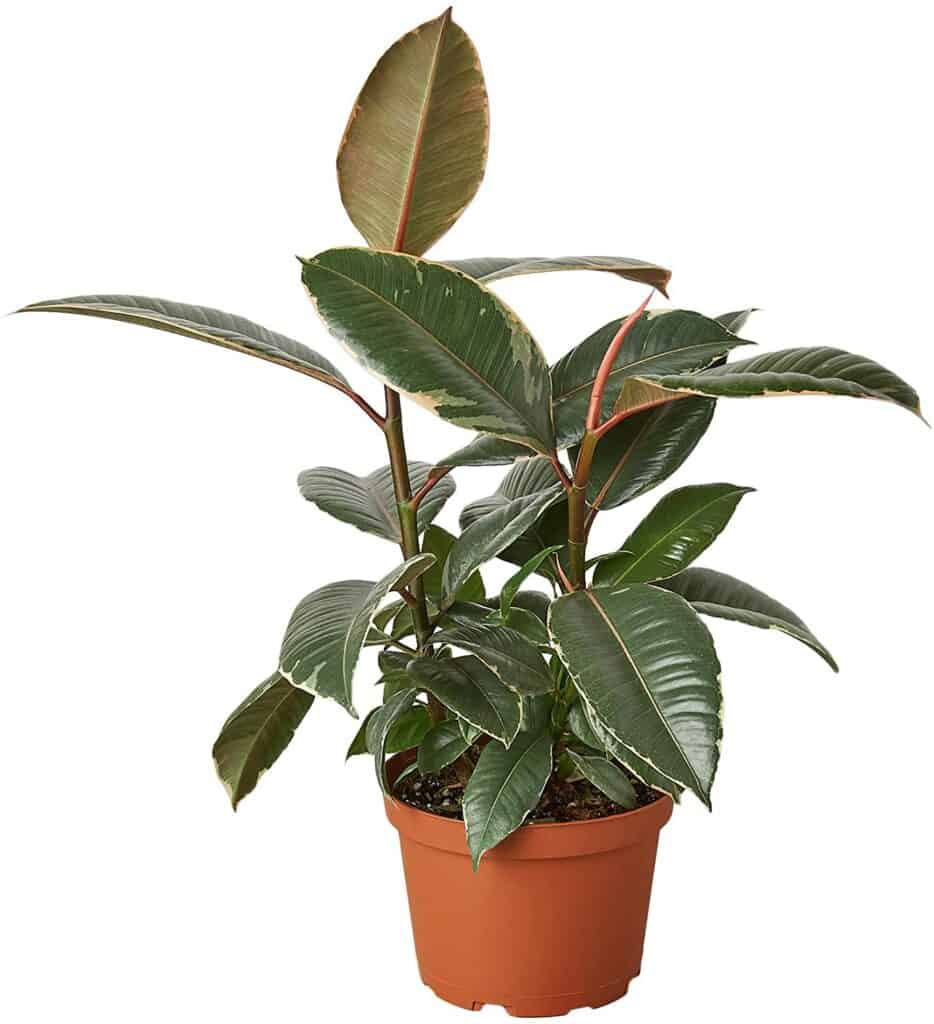
When caring for a plant it is best to treat them quickly when they show signs of an infestation or a disease. This will give them a chance to recover and it may prevent other, nearby plants from being infected as well.
The best care treatment for Ficus Tineke is to learn how to water, feed, and plant them properly. They do not like change and they need access to the appropriate amounts of sunlight, water, and nutrients, so they can flourish. It is also recommended that they be inspected for insect infestation and cleaned regularly. These two preventative measures should eliminate or, at least, reduce infestations and diseases.
If, however, a Ficus Tineke does show signs of an infestation or a disease, follow these steps:
Aphids
This type of infestation looks likes tiny insects that are shaped like teardrops. To deal with an infestation of aphids, follow these steps:
- Spray the plant with a mixture of neem oil and soapy water
- Wipe down the leaves of the plant
- Apply neem oil to the leaves to prevent another infestation
Mealybugs
This type of infestation looks like cotton that has attached itself to a plant’s stems and leaves. To deal with an infestation of mealybugs, follow these steps:
- Spray a solution of alcohol and water on the leaves
- Rub the leaves with a cotton ball
- Coat the leaves in neem oil or insecticidal soap every few days
Leaves with Brown Spots
This could be a sign that the plant is exposed to too much direct sunlight, too little humidity, or it has been over-fertilized. It will be a process of elimination to determine what is causing the brown spots on its leaves.
- A plant that is exposed to a lot of direct sunlight should be moved to a shadier area.
- A plant that does not have enough humidity should be moved to a more humid area or given a humidifier.
- A plant that has been over-fertilized may need to have its soil saturated with water.
Scale Insects
Evidence of this problem is round lumps on the plant’s leaves and stems. These lumps are usually small, round, and brown in color. To deal with an infestation of scale bugs, follow these steps:
- Spray them off with a hose
- Wipe the remainder off with neem oil and a cloth
- Prevent them from returning by coating the leaves with neem oil regularly
Spider Mites
Evidence of a spider mite infestation will show up as webbing on the leaves and stems. To treat this type of infestation, follow these steps:
- Fill a spray bottle with a quart of warm water, 1 tsp. of dish soap, and 2 tsps. Of neem oil
- Spray and wipe the leaves and stems of the plant clean
- Repeat as necessary
Where to Buy Ficus Tineke Seeds Online
To begin growing a Ficus Tineke plant from the ground up, look for seeds at these online shops:
Where to Buy Mature Ficus Tineke Online
To begin enjoying a Ficus Tineke plant right away, look for a mature plant at these online shops:
FAQs
Question: Is Ficus Tineke Toxic?
Answer: Yes, this plant is mildly toxic. Its sap can irritate the skin and can cause pain and even vomiting if it is ingested. If someone has consumed a part of these plants, contact a medical professional or poison control.
Poison Control Center
Animal Poison Control
Ask a Poison Control Vet
Question: Can Ficus Tineke be Pruned?
Answer: Yes, pruning is a great way to craft a bushy plant and rid it of unsightly leaves and stems. Pruning should always be done while wearing gloves so as to avoid skin irritation.
Question: Does Ficus Tineke Have Air Purifying Qualities?
Answer: Yes, this plant is considered to be one of the best at eliminating common household toxins.
Concluding Thoughts
Ficus Tineke is a rising star and Plant Instagrammers are surely taking notice of its unique looks and wonderful qualities. It may be slightly finicky, but its drama is all worth it in the end. It should have a place in every home and garden.

